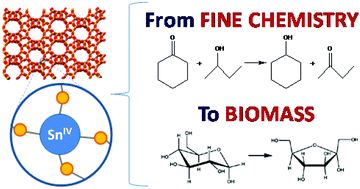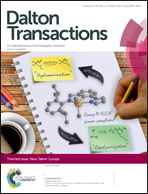State of the art of Lewis acid-containing zeolites: lessons from fine chemistry to new biomass transformation processes
Abstract
The former synthesis of TS-1 opened new catalytic opportunities for zeolites, especially for their application as selective redox catalysts in several fine chemistry processes. Interestingly, isolated Ti species in the framework positions of hydrophobic zeolites, such as high silica zeolites, offer unique Lewis acid sites even in the presence of protic polar solvents (such as water). Following this discovery, other transition metals (such as Sn, Zr, V, Nb, among others) have been introduced in the framework positions of different hydrophobic zeolitic structures, allowing their application in new fine chemistry processes as very active and selective redox catalysts. Recently, these hydrophobic metallozeolites have been successfully applied as efficient catalysts for several biomass-transformation processes in bulk water. The acquired knowledge from the former catalytic descriptions in fine chemistry processes using hydrophobic Lewis acid-containing zeolites has been essential for their application in these novel biomass transformations. In the present review, I will describe the recent advances in the synthesis of new transition metal-containing zeolites presenting Lewis acid character, and their unique catalytic applications in both fine chemistry and novel biomass-transformations.

- This article is part of the themed collection: New Talent: Europe

 Please wait while we load your content...
Please wait while we load your content...